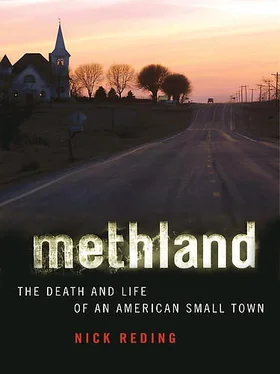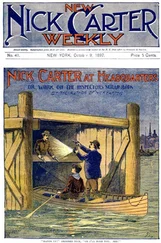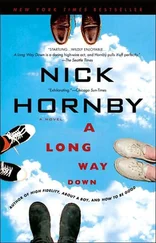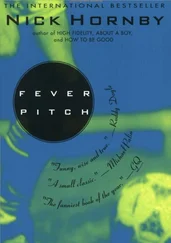Loya is five feet six and slightly built. The first time I met him, in a secure room at the Federal Building in San Diego, he appeared behind photochromic gold-rimmed glasses and a deep tan to be in exorbitantly good health for a man of fifty-nine. Loya had the looming and insistently charismatic presence of a Vegas entertainer. He’s been a government employee for thirty-nine years: first with the California Bureau of Narcotics Enforcement (BNE), then with DEA for twenty-five years, and now with the National Methamphetamine Chemical Initiative. He is thoroughly a company man, preternaturally slow to criticize the government or any government agency. He considers American industry “the reason we lead the world” and advocates the fiscally conservative desire for small government and limited regulation. Recent developments, though, had truly stretched many of Loya’s convictions.
What was clear the day that I talked to Loya on the phone—nearly three years to the day after first meeting him in San Diego—is that he in some ways has found himself playing the role of Gene Haislip. Loya was one of architects of the Combat Meth Act. He also had unprecedented success in persuading the Mexican government to outlaw pseudoephedrine imports into the country in 2007, thereby depleting the amount available to the DTOs. Loya is proud of his work. He is also growing weary, four decades after going to work for a government that, as he put it, “seems ever willing to give new life to the same damn problem it purports to solve.” He went on, “Every decade, we get a chance to put meth on the mat once and for all. And we always fail.”
According to Loya, the failure of the Combat Meth Act is, like the failure of Haislip’s 1996 law, the direct result of lobbying related to the pharmaceutical industry. The guiding philosophy behind the Combat Meth Act was to lessen domestic crank production by monitoring the sale of cold medicine nationwide. According to Loya, DEA gave Congress three stipulations for doing so successfully. One, the means of monitoring would have to be federally mandated, as opposed to being left up to individual states. Two, pharmacies would need to track cold medicine sales via computer, rather than through handwritten logs. Three, said Loya, DEA insisted that pharmacists’ computers would need “stop-buy” language built into their monitoring programs—meaning that if a customer who has already purchased the monthly maximum of Sudafed tries to buy more, the computer will automatically prompt the pharmacist to disallow the sale, or “stop the buy.”
This time, it wasn’t Allan Rexinger’s Proprietary Association that objected to the key elements of a piece of antimeth legislation; it was the National Association of Retail Chain Stores, which represents, according to Loya, the five major pharmaceutical drug chains in the United States: Target, Wal-Mart, CVS, Walgreens, and Rite-Aid. The organization’s acronym, Loya noted sardonically on the phone that day, is NARCS.
While the Combat Meth Act was being debated in 2006, lobbyists on behalf of NARCS argued that a “stop-buy” clause in the legislation would make pharmacists and retail employees into policemen. Why, for example, NARCS asked, should CVS employees have to tell a customer that he can’t buy something? Rather, NARCS said, the data should simply be made available following the sale to local police, at which point the police could do as they saw fit. The stores would be willing to comply, but they should not have to do so at the potentially unfair loss of sales.
The counterargument, as Tony Loya characterized it, was this: “Does refusing the sale of alcohol and tobacco to minors amount to ‘policing’?
“Yes,” Loya went on, “it does. And the drug chains have been doing that without complaint for years. So what’s the difference if they have to tell a few people that they can’t buy more than a certain amount of Sudafed? But the lobbyists insisted that any attempt whatsoever at keeping track of sales is a threat to their financial health. It’s just not true.”
In the end, Congress rejected the “stop-buy” language. More important, Congress resisted DEA’s pleas that the law’s interpretation be federally controlled. Instead, Congress decided to make the Combat Meth Act more of guideline than an actual mandate, leaving specific interpretation to state governments. This, according to Loya, effectively laid the law bare to the powerful NARCS lobby. Meantime, the law’s leading advocates and negotiators—Republican Congressman Mark Souder and Senator Dianne Feinstein, Democrat of California—declared the legislation a groundbreaking blow to meth.
Loya characterized the failure of the Combat Meth Act in terms that would have been all too familiar to Larry Murphy back in 2005. States, he said, just like towns and counties, are businesses. Poor states like Missouri, just like poor towns like Oelwein, are loath to risk straining relations with chains like CVS and Rite-Aid. Back when Larry Murphy made the decision to rebuild his town by rejecting businesses that weren’t good for the community, he reconciled himself to the risk that Oelwein could become poorer still, and that he would be blamed. Oelwein gambled and won in 2005 and 2006. Missouri, faced with an implicit threat to its already teetering economy from NARCS, chose to play it safe, refusing to adopt DEA’s “stop-buy” language in its interpretation of the Combat Meth Act late in 2006. At the further behest of NARCS, Loya said, the state legislature allowed pharmacies to rely on handwritten logs of cold medicine sales, thereby saving chains the need to buy new computer programs. A year and a half later, Missouri once again has the highest per capita crank production in the United States.
“Here we are,” Loya said, “the most technologically advanced nation in history, and we have thousands of people writing hundreds of thousands of names in notebooks. We pass a law, and then we basically tell these huge companies that they’re not responsible for complying. It’s stunning.”
In reaction, the cottage meth industry has become more efficient than Loya ever imagined. Beavis and Butt-Head labs have become more like midlevel operations, he said. Smurfing has become an industry in its own right. Having developed not just local but also national distribution chains, Smurfers drive from state to state and region to region buying cold medicine and selling it to increasingly productive and organized networks of batchers. Locally, Smurfs pay pharmacy employees to ignore the fact they are stealing cold medicine.
“CVS or Walgreens employees,” said Loya, “make more in two minutes of pretending not to notice theft than they make in a week of standing behind the counter. It’s a no-brainer.” As a result, Loya said, lab numbers are still down compared with their all-time highs in 2004 and 2005, but production is way up.
What’s more, Loya’s sources indicate that cocaine seizures along the Mexican border are at a twelve-year high, noting that the last time cocaine was so heavily consumed was in 1996, when Haislip’s law briefly depressed the DTOs’ meth market. Loya attributes the increase in cocaine seizures this time to his own hard-fought success with getting the Mexican government to limit pseudo imports. What Loya fears, though, is that local meth producers will keep the market alive while the DTOs, flush with money from a booming cocaine business, will have time and capital not only to recover from a temporary setback, but to become even stronger.
“I mean,” Loya said, “I’m stuck in a time warp. It’s twelve years ago all over again, with the Mexicans biding their time with cocaine till they can figure out a way to get back the part of the meth business we just took away. Will they go to Canada for pseudo, or North Korea, or Colombia? Who knows. My guess is Canada. What’s certain is they’ll go somewhere. Because the addicts are here. The money is here. The Smurfs are keeping everyone high while the Mexicans reorganize.”
Читать дальше












